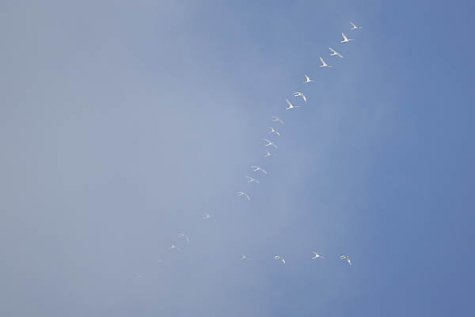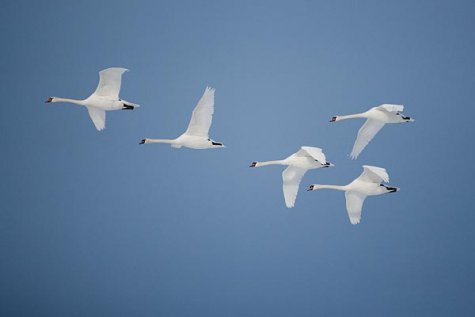Swan migration
Photos: Arne Ader
Translation:SilverT
Whooper swans are migrating
Whooper swan Laululuik Cygnus cygnus
Mute swan Kühmnokk-luik Cygnus olor
Tundra swans have been stopping in Estonia since October during their migration and in the second part of November the last of the migrants leave for their wintering areas in the wetlands, polders and fields of Holland, Great Britain, ireland, Germany and Denmark. Only a few dozen tundra swans, together with whooper swans, stay in our waters for the winter.
Whooper swans leave a few weeks later and birds who come from the north can be seen flying over even in December. Wintering areas are the same as tundra swans`. Whooper swans spend winters in Estonia regularly, mainly in northern Estonia or western Saaremaa. The number of wintering birds varies and depends on the harshness of the winter and ice conditions. During mild winters almost a thousand whooper swans winter in our waters, but with harsh conditions only a couple of hundred.
The passing autumn migration of the best-known swans, the mute swan, ends in December when shallow bays start to freeze. The largest groups can be seen on the coast of western and northern Estonia, but also more and more every year on Lake Peipus which is the gathering place for passing migrants coming from the north-east or east. Wintering areas are in the southern part of the Baltic Sea: Sweden, Denmark, Poland, Germany, the Netherlands and also Great Britain.
Our largest mute swan wintering area is in north-western Saaremaa, in Küdema bay where there are more than two thousand birds wintering. In addition to the waters of Saaremaa, there are many winterers also on the coast of the Gulf of Finland.
The maximum number of mute swans wintered in Estonia in 1993 – 12 000 individuals. The harsh winters of previous years have shown that such a decline in the urge to migrate can often prove to be fatal for the birds.
NB! The request not to feed waterfowl is still in power.
See the migration of swans:
Tundra swan: LINK
Whooper swan: LINK
Mute swan: LINK
Mute swans










